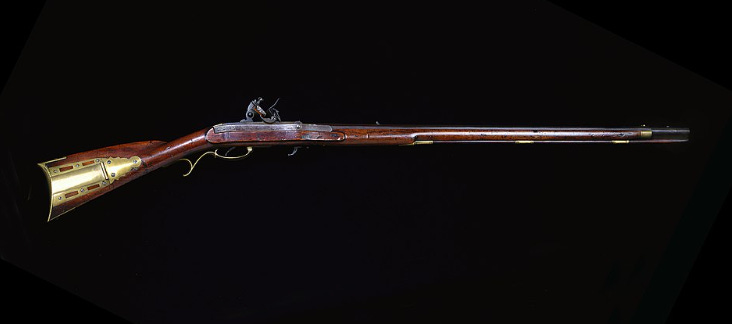Muzzleloader Antlerless Season Kicks Off—And No, Original Muzzleloaders Didn’t Have Scopes
The transformation from primitive hunting to herd management in Vermont
Deer hunters who applied for a Vermont muzzleloader season antlerless deer permit by the July 31 deadline can now go to the Vermont Fish & Wildlife Department website to see if they won a permit. The agency announced the winners on September 9 after conducting a randomized computer drawing. Permit winners are listed in two categories: regular lottery winners and landowners. By law, landowners who apply for a landowner antlerless permit are prohibited from posting their land against hunting.
When Vermont introduced its muzzleloader deer season in the early 1970s, it wasn’t about fine-tuned herd management or filling the freezer after rifle season. It was about tradition. Hunters used black-powder rifles that required pouring powder down the barrel, seating a patched round ball with a ramrod, and igniting it all with a percussion cap or even a flint. The process was slow, the rifles were heavy, and accuracy depended as much on the hunter’s patience as it did on the weapon itself.
Imagine a long-barreled sidelock rifle, often without sights beyond a simple iron notch. No stainless steel. No sealed primers. No optics. These were the firearms Vermont hunters carried into the woods when the state launched its first muzzleloader season more than 50 years ago.
From Tradition to Management
At first, the muzzleloader season was simply a nod to Vermont’s heritage. The limited hunt gave enthusiasts of primitive firearms a chance to use them in a dedicated season. For many, the appeal was in the challenge—getting close enough for a 50-yard shot, reloading while standing in snow, and living history in real time.
But by the 1990s, the Vermont Fish & Wildlife Department began to realize that muzzleloader hunters could play a bigger role. Deer numbers were fluctuating, and managers needed more flexibility. Unlike rifle season—where nearly every licensed hunter can participate—muzzleloader participation could be controlled by issuing a limited number of antlerless permits.
That shift turned muzzleloader season into the state’s most important tool for managing the deer herd.
Sidebar: Muzzleloader Season Through the Decades
1970s – Tip of the Hat to Tradition
Season introduced as a way for hunters to use old-style black-powder rifles.
Firearms were sidelocks or flintlocks; slow, heavy, and short-ranged.
No scopes, no stainless steel, no sealed primers.
1980s – A Limited Opportunity
Strictly regulated, often “either-sex” in certain areas.
Still focused on heritage and challenge rather than management.
1990s – The Management Tool Emerges
Deer populations rising and falling; state needed flexibility.
Muzzleloader season became tied to antlerless permit lotteries.
Late December timing established.
2000s – Modernization
Inline rifles, scopes, and better powders legalized.
Accuracy improved, hunter participation expanded.
Permit allocations varied by Wildlife Management Unit.
2010s – Population Balancing
Antlerless permits firmly tied to muzzleloader season.
System allowed Vermont to trim herds in some regions while protecting others.
2020s – Adaptive Management
Season runs nine days in December.
Annual biologist assessments set permit numbers by WMU.
Focused primarily on keeping the herd balanced with habitat.
The Modern Muzzleloader Season
Today’s muzzleloaders are a far cry from the original flintlocks. Inline rifles, stainless steel barrels, sealed ignition systems, and scopes have become standard. Accuracy and reliability have improved dramatically, making the season more accessible to a wider group of hunters.
But it’s the permit system that makes muzzleloader season so central. Vermont’s deer biologists assess herd size and habitat conditions each year by Wildlife Management Unit (WMU). Based on those numbers, the department decides how many muzzleloader antlerless permits to issue in each region—or whether to issue any at all.
In areas where deer populations are above target, thousands of permits might be distributed.
In units where the herd is struggling, hunters may see zero permits.
The result is a flexible system that lets Vermont fine-tune deer numbers year to year. The muzzleloader season is now less about nostalgia and more about balancing deer with available habitat.
A Season with Staying Power
Even with its modern role, the season hasn’t lost all of its traditional flavor. It still comes late, in mid-December, when snow may be on the ground and deer are beginning to yard. It still offers a different pace than rifle season, with fewer hunters in the woods and a more deliberate style of hunting.
But the heart of muzzleloader season has changed. What began as a tip of the hat to Vermont’s history has become the linchpin of deer management in the state. As one Fish & Wildlife biologist has put it in past reports, “If we want to keep the herd healthy and sustainable, muzzleloader hunters are our most important partners.”



